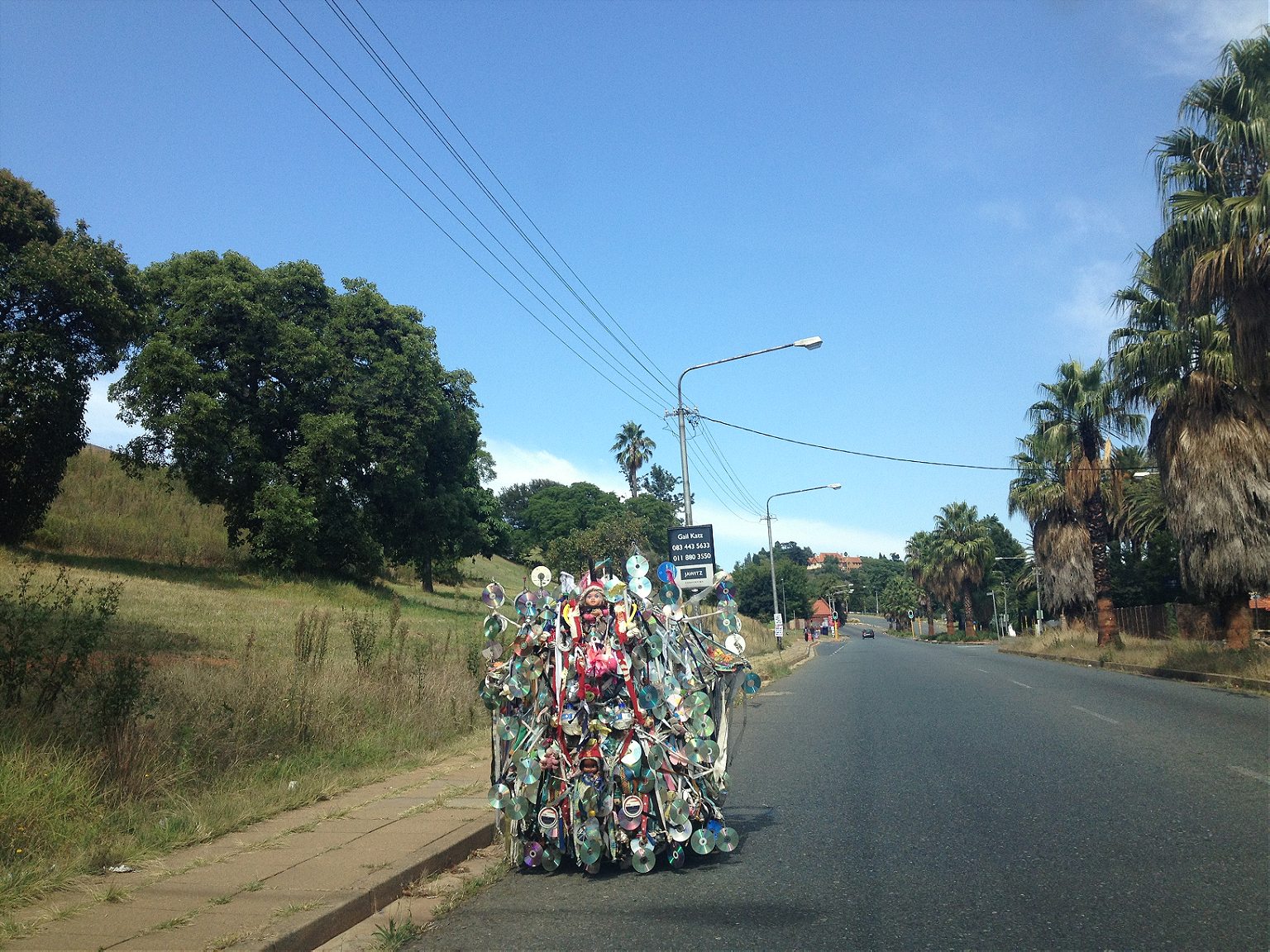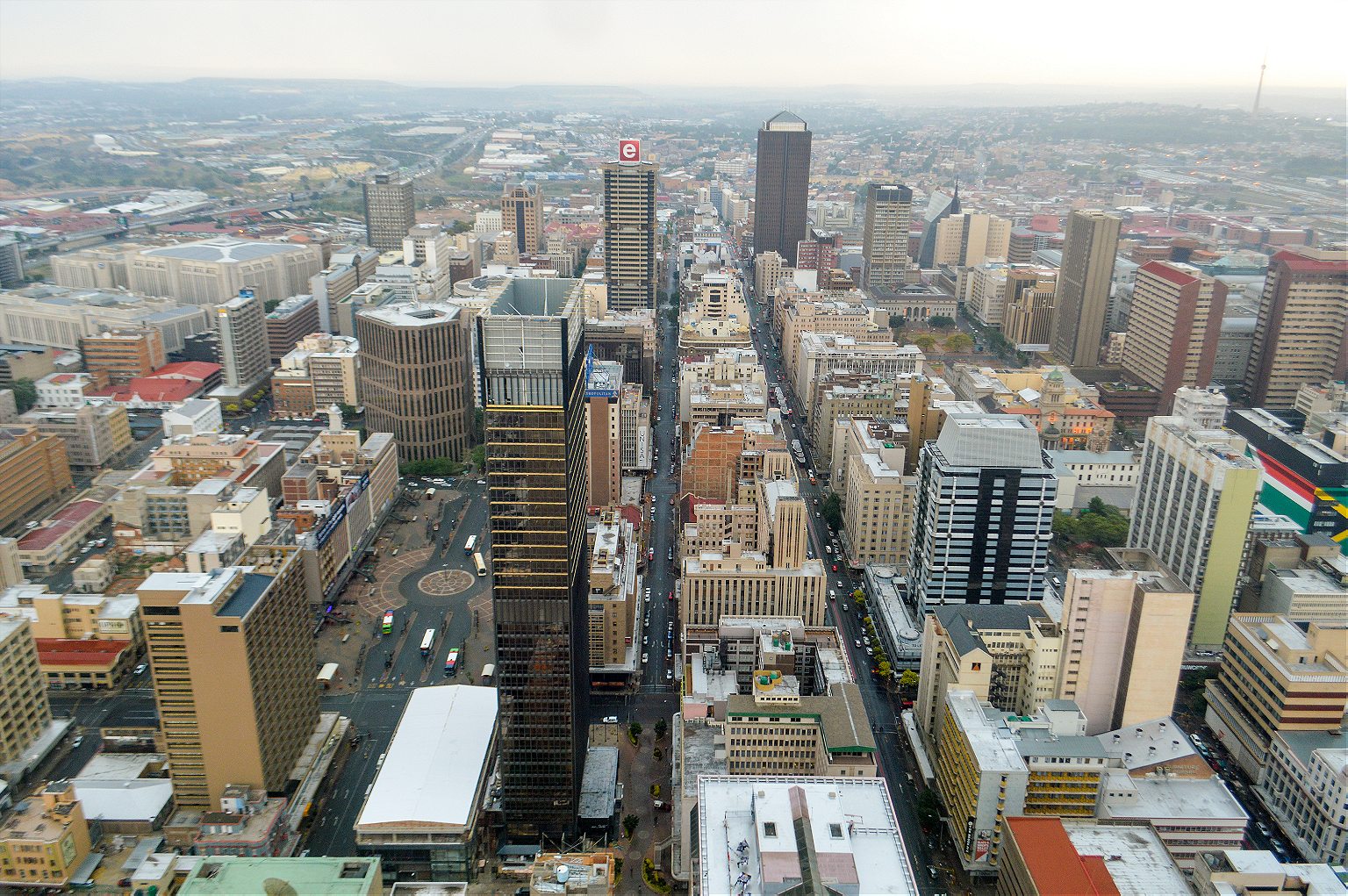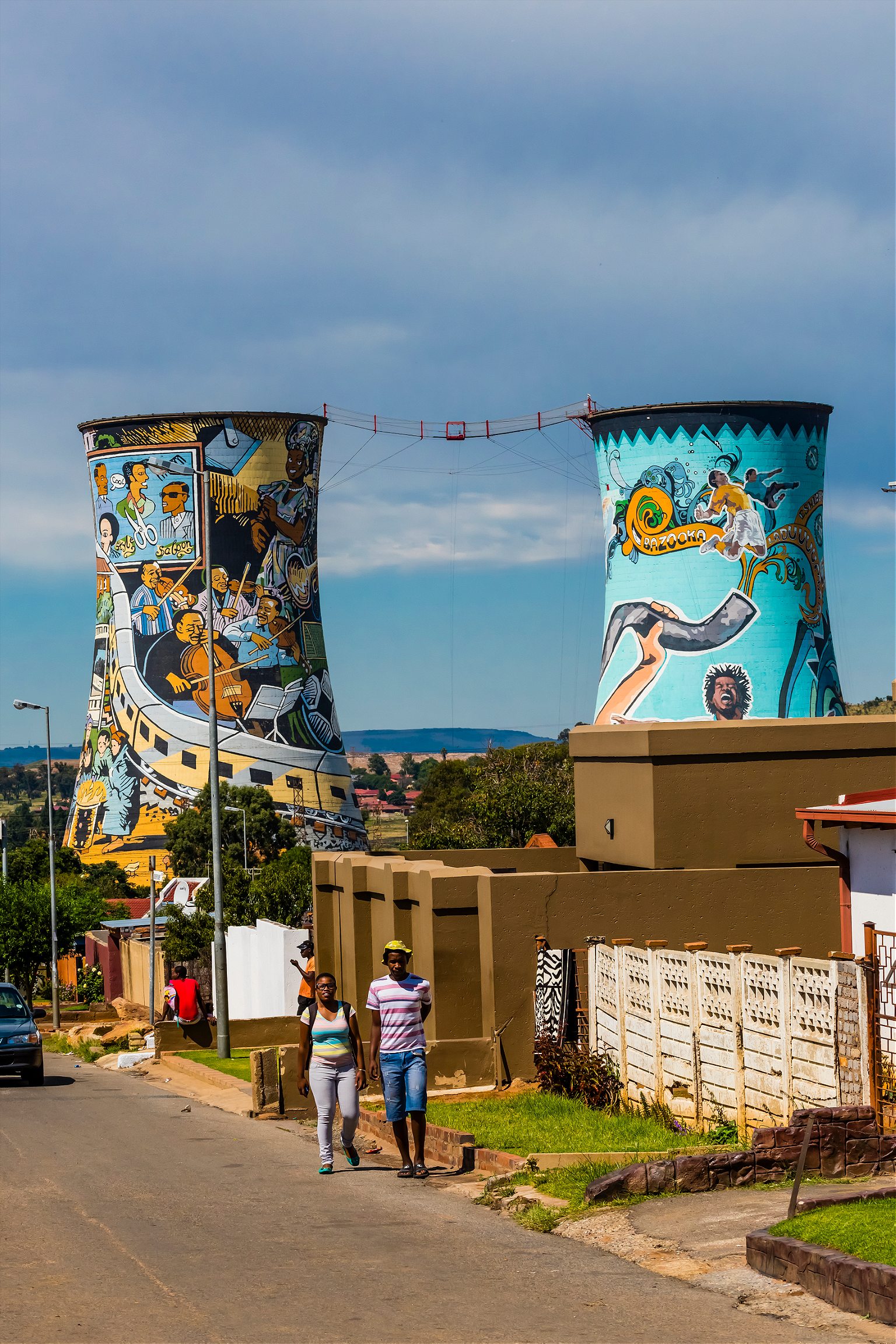A Joburg native’s affectionate and honest guide to South Africa’s largest, proudest city.

Get out of the airport. As a Johannesburg native, my blood pumps with a loathing for Cape Town, the way a serious East Coaster might feel about the West Coast of the U.S. (or vice versa.) That might sound bitter, but you would be too if you had to constantly convince people that your city is worth more than a two-hour layover at O.R. Tambo Airport on the way to the promised land of Table Mountain, two oceans, and hypergentrification. Cape Town is pretty, I’ll admit it. But only grudgingly. Now, about that crime rep: South Africa is notorious for the frequency and variety of crime, from street muggings to bank heists. I wish I could say it was overblown but we do have a problem. The fact is, though, that Johannesburg’s province of Gauteng has a much lower crime rate than the Western Cape. So cancel that connecting flight, baby; you know it’s Joburg you really want. Grab a ticket on the Gautrain, our luxury transit railway system, and for God’s sake don’t get off at Sandton.

Seriously, skip Sandton. Many visitors who dare to venture out of the airport are directed to Sandton, the new commercial and business center of the city. That means malls. Malls and banks. It’s shiny, sanitized, and expensive—and they say it’s safe. It’s basically an extension of the airport.

Start with a walk in Rosebank. One stop beyond Sandton on the Gautrain from the airport, this northern suburb is a cultural middle ground of the city. It’s both urban and suburban, quiet but arty, gentrified just enough to feel secure but close enough to the real city to get your feet wet. A walk down Jan Smuts Avenue in Rosebank will include coffee bars, flower shops, vintage stores, and art galleries, like the avant-garde Goodman Gallery, which is plugged into all the latest artistic talent.


Be confident, not cocky. Crime is an undeniable concern for travelers to Johannesburg, but fear shouldn’t stop you from experiencing the city. Just follow the basic rules of not flashing your goods and not looking too lost. Don’t be afraid to explore, but don’t take unnecessary risks. If driving, don’t keep valuables in sight of the windows unless you want to experience one of our famous “smash and grabs.” Best keep everything locked up in the trunk.

Drive, then walk. Johannesburg is an expansive and expanding city. During apartheid, it was extended peripherally so the black population could be banished to the outskirts, but still live close enough to come in and work for the whites. Getting around has never been convenient, and at some point you will need vehicular transport. There are private taxis, which have become more visible and accessible since our tourism industry has blossomed, plus taxi apps, the imperfect-but-it’s-a-start Rhea Vaya bus transit system, and the informal minibus taxi—which the adventurous can hail using one of these hand signals. Or do what many visitors do and just rent a car. But you should only use the wheels to get from place to place, and then get out and walk. (We are murderous drivers though, so please beware of traffic.)


Expect parking tips. When parking your car, don’t freak out if you get unsolicited help from one of our car guards. They’re kind of informal valets, usually just a guy on the street who has probably never owned a car but will give you expert parallel parking tips. Listen to him, and tip him back. The going rate is at least 10 Rand ($0.80).

Look out for robots. Whether walking or driving, the traffic lights—or robots, as we call them—are where the action is. Whether the lights flash green, red, or orange, they all mean “stop” because there will be some daredevil on the opposite side trying to make it through before the red light, or during, or after. At traffic lights you will also be accosted by street entrepreneurs, who can come in handy if you really need an in-car phone charger, suit hanger, or pumice stone in a pinch. It wouldn’t hurt to support their enterprise, so keep some change up front to buy a newspaper or whatever. But again, don’t unlock your doors or lower your windows too much because the vendors aren’t the only ones looking for opportunity.

Dip into Norwood. Like many economically precarious societies, South Africa is roiling with racial and xenophobic tension. Between flare-ups, however, there is tacit coexistence. The communities dissolve into each other and you barely know when you are moving from one quarter to another. Take Grant Avenue in Norwood, the last bastion of the city’s old Jewish neighborhood. The most popular restaurant here is The Schwarma Company, which despite its name is most famous for its massive Mediterranean-spiced steaks and ribs. It’s run by Palestinian twin brothers. You should go there. But go on the Jewish Sabbath, when you’re more likely to get a table. (Also, one of the twins is really friendly while the other one is a total grump. Have fun trying to figure out which is which.) Further up Grant Ave towards Orange Grove and Yeoville, you will be speaking French with Senegalese, Ivorian, and Congolese Joburgers. If you want to wash that steak down with cheap beer and fresh fish grilled on an outside barbecue, say the magic words “Où se trouve La Camerounaise?” When you get there, ask for Lucy and thank me later. On that note…

Don’t look for South African food. It’s no use: Johannesburg is too cosmopolitan. Eat your way through this city to know it. Go to Fordsburg for Turkish shawarma at Istanbul café and South Indian fried fish, crab curry, and masala dosa from Dosa Hut. Walk a few blocks up to Little Mogadishu and have tea and samosas at Kisimayo. Head to Chinese Northern Foods in Cyrildene for duck with potatoes, jellyfish salad, and their unmissable “Pie Like Hat,” a chewy flatbread. Get piri-piri prawns the size of your toddler at the unpretentious Portuguese Troyeville Hotel, which also happens to have some of the best views of the city. These are all part of the South African experience.


Clean up with carne. Then, there is perhaps the most South African experience: eating meat at a carwash. In Johannesburg’s townships, the militarized apartheid police suppressed large gatherings, from dancing and drinking at shebeens to wedding parties and funerals. People had to find imaginative ways to socialize. You can get a sense of that vibe at the E’Socialink shisa nyama (the Zulu word for barbecue) carwash in Soweto—the township on the south side of Johannesburg, once home to the Mandelas and other great apartheid-struggle veterans. Another great meat-and-entertainment hangout is Joe’s Butchery shisa nyama in Alexandra township, where the ubiquitous grilled meat comes with solid live music and DJs on a Sunday night.

Take the plunge in Soweto. If you’ve got a strong stomach, you might try the tripe at the shisa nyama. If you want to test your gut even further, try swinging between the graffiti-covered Orlando Towers. These twin cooling towers of a decommissioned coal-fired power station are Soweto’s most distinctive landmarks, and you can bungee-jump off the small bridge between them—or into one of the towers if that’s your thing. While you’re up on the bridge, see if you can spot Nelson Mandela’s house on Vilakasi Street. And while you’re down in the south of Johannesburg, it’d be criminal of you not to take the 20-minute drive from Soweto to the indelible Apartheid Museum and learn about us.


Catch a movie with the masses. Most people who’ve been to Cape Town will tell you it doesn’t feel like Africa. That’s because the local government has managed to build a bubble around its privileged (white) minority. This would be impossible in Joburg, because we all live on top of one another. Right next to gleaming Sandton is Alexandra township, a messy, chaotic stronghold of the hoi polloi. Here you will find Kings Cinema, an art-deco movie house and a popular venue for performances by local musicians like the Alexandra All Star Band and the Jazz Maniacs. Kings was first established in the 1950s, but had to be rebuilt after it was bombed by apartheid forces in 1984.

Go to town. For me, one of the must-go parts of Joburg is the original central business district, known simply as “town.” The main street to know here is Commissioner Street, which you should walk from top to bottom. The route will bring you to the hipster Arts on Main district on Fox Street, the formidable Market Theatre, and Museum Africa in Newtown. On your way you will find restaurants, curio stands, barbershops, and most importantly, traces of history. The street is decorated with busts of historically significant Africans, old colonial buildings like the Rand Club—the city’s oldest private members’ club—and Marshall Street prison, where my uncle was once detained under apartheid and managed to escape disguised as a woman in a sari. Not to mention the infamous John Vorster Square prison, where too many of our great anti-apartheid stalwarts died in detention.


Say “howzit” a lot. As a greeting or an icebreaker, with strangers or with friends, it’s the easiest way to make an entrance or enquire about someone’s well-being. This is our go-to word, with which you can sculpt an entire conversation. Behold:
Person A: Howzit?
Person B: All good bro, howzit?
Person A: Yeah man good, howzit going with your business?
Person B: Great. How’s your mum doing? Tell her I said howzit.
Person A: Cool I’ll pass it on.
FIN.

Embrace cheap laughs. The seeds of Johannesburg’s stand-up comedy scene were planted a decade ago in a few underground clubs frequented by students and stoners. As demonstrated by (but not purely thanks to) Trevor Noah’s international success, South African comedy has bloomed to rival more established scenes in New York and London. Johannesburg is home to top international acts like Loyiso Gola, Kagiso Lediga, Loyiso Madinga, and Mojakisane Lehoko, who have not forgotten their roots. They still perform frequently at low-key venues in the bohemian Melville area and newly-gentrified Braamfontein, where you will find them doing groundbreaking material on Tuesday nights in Kitcheners, a chilled-out bar which turns into club afterwards, with top-notch DJs playing amazing South African house tracks. All this for under two U.S. dollars. Gotta love that exchange rate.

Visit Joburg’s “Met”. The Johannesburg Art Gallery (JAG) is my city’s answer to New York’s Metropolitan Museum of Art, complete with an adjacent park. The Met’s vicinity to Central Park has nothing on Joubert Park, which can be seen from the JAG and boasts a vibrant population of “nyaope boys,” young people who have become hopelessly addicted to the street drug, made with rat poison and HIV meds. You’re going to have to avoid these kids, but the whole thing is a devastating example of how Joburg refuses to sugarcoat anything. It says a lot that the largest art gallery on the African continent, an exquisite old building bursting with local and international masterpieces, is nested within one of the country’s greatest social failures.


Buy silk and samosas at the Oriental Plaza. Fietas is one of the famous old Johannesburg neighborhoods where many races lived and mixed joyfully until they were segregated under apartheid. Indian families and shops were moved to Lenasia and Fordsburg, where many remain today. In Fordsburg, the government pushed traders into a shopping center called The Oriental Plaza, where you can still buy absolutely anything, from hot samosas to knitting needles and leather goods to Kashmiri furniture and, of course, lots and lots of gold. This place is also known for its endless variety of textiles, and skilled tailors.

Get stuffed. When we talk about Indian food, it’s usually an umbrella term for the South Asian delicacies available at the countless Bengali, Pakistani, and Indian restaurants in Fordsburg. But then there is South African Indian food—which is rather less sophisticated, but wholly satisfying. If you want to know the epitome of comfort food, chow down on one of the specials at the iconic Solly’s Corner, an institution run by a sublime dynasty whose sons have spent generation after generation serving hot vinegar-sodden chips (known as slaap chips), sausages, steak, salad, and kebabs known as frikkadels, all stuffed generously into a sandwich that will always taste the same. There are so few things we can rely on in this world. Start and end your Joburg sojourn at Solly’s Corner for something to count on.
Top image: Getty/BFG Images